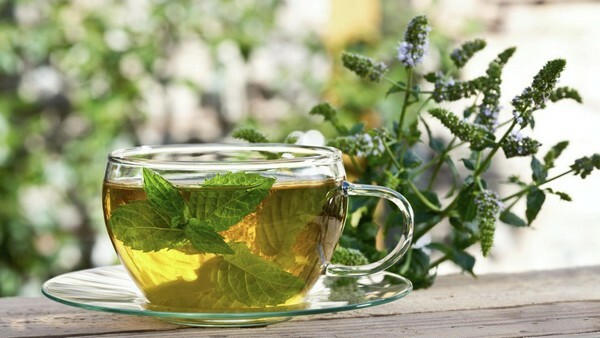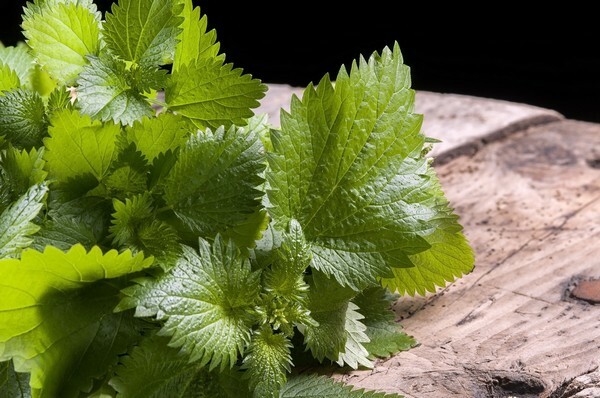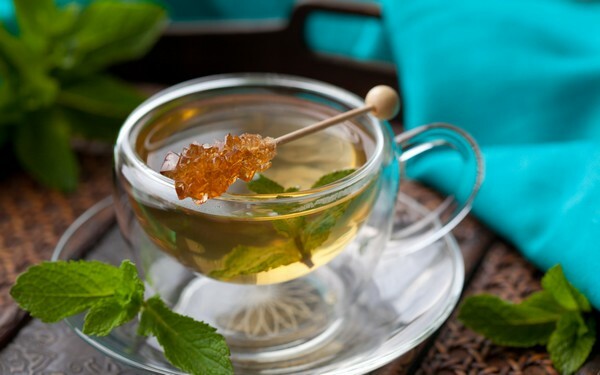- Special features of the
- plant Useful properties and indications for use
- Contraindications to the use of
Mentholic mint is not only a variety of widely known peppermint, but has a similar spectrum of application. A perennial plant is used in medicine as an antispasmodic, sedative and antiseptic. On the basis of biologically active substances of menthol mint, pharmacological preparations for the treatment of angina pectoris, neurosis, inflammatory diseases of the nasopharynx have been synthesized. High concentration in stems and leaves of essential oils and tannins determines a wide range of contraindications and side effects of plant raw materials. To avoid the development of dyspeptic disorders and allergic reactions during therapy, do not exceed the recommended dosages of medicinal tea or decoction.

Characteristic features of the
plant Mentholic mint differs from its peppery variety with a high content of essential oil in menthol. This gives freshly brewed tea a tart taste and a rich flavor. In the process of processing fresh crystalline raw materials are obtained by the crystalline menthol used in the manufacture of cosmetic and hygienic products - toothpastes, refreshing lotions, dandruff shampoos, and after shaving balms. Annually for the needs of industry in the Voronezh region and the Krasnodar Territory are planted huge plantations of fragrant plants.
Recommendation: Menthol mint should be harvested for the treatment of diseases during flowering, which continues in the southern regions from the beginning of June to the end of July. It is during budding in the leaves that it accumulates the maximum amount of biologically active substances exhibiting therapeutic effectiveness.
For menthol pepper, which grows both on adjacent sites and along river banks, at the forest edges, in the steppe, the following morphological features are characteristic:
- is a horizontal, branchy rhizome;
- straight tetrahedral stem, hollow inside;
- opposite, oblong-ovoid-shaped leaves;
- small light purple flowers;
- is a fruit consisting of four nuts.
A characteristic feature of a perennial plant is a strong, spicy, fresh fragrance. Here is how the menthol mint looks on the photo:

With regular watering and complex feeding, the plant can reach a height of 1 m. The length of the stems of wild menthol mint varies from 25-40 cm. Harvesting of plant raw materials should be carried out in dry weather at noon time. This method of collection will avoid the development of putrefactive processes during drying and further storage.
The difference between menthol and mint is fundamental. Mint is a perennial plant with a pleasant aroma, bitter taste and numerous therapeutic effects. All this provides menthol, which is an active ingredient of essential oil. It is a chemical compound in the form of transparent crystals, readily soluble in water.
Useful properties and indications for use
Virtually all the useful properties of menthol mint are based on the presence in its chemical composition of essential oil. It is used in official and traditional medicine to treat pathologies that occur against the background of persistent narrowing of the blood vessels and accompanied by pains of different localization. Also tea and decoction from the leaves of the plant have the following properties:
- antiemetic;
- is a diuretic;
- disinfectant;
- drying;
- is antispasmodic.
Mentholic mint is used for the prevention of benign and malignant neoplasms due to its ability to prevent cell degeneration. Compresses from vegetable decoction help to curb inflammatory processes in the soft, articular and cartilaginous tissues. This method of therapy is prescribed for patients diagnosed with sprains of the musculoskeletal system, allergic rashes, sunburn.
It is interesting: Essential oil of menthol mint has a vasodilating effect that is actively used in the therapy of arrhythmias, angina pectoris, neuroses. The use of one cup of sweet-scented tea leads to a drop in blood pressure to normal values.
Decoction of menthol mint is used as a sedative and sedative. This property is used to treat the following neurological disorders:
- excessive nervous excitability;
- increased anxiety;
- psychoemotional instability.
The chemical composition of menthol mint includes phytoestrogens. These biologically active substances exhibit a therapeutic effect similar to estrogen. Gynecologists recommend tea from mint to women to reduce the severity of symptomatology of menopause - hot flashes, neuroses, headaches, increased sweating.
Important: The property of the plant to stabilize the hormonal background is used to eliminate pain during menstruation, as well as to treat acne.

Diseases of the gastrointestinal tract
Mentholic mint successfully treats digestive system pathologies - chronic diarrhea and constipation, hyperacid gastritis, including bacterial origin. Decoction of the plant with regular application contributes to the elimination of biliary calculi, the normalization of bile secretion. Bioactive compounds of menthol mint prevent excessive gas formation after consumption of fatty and fried foods.
Advice: Decoction of a useful plant is used in the therapy of bacterial and intestinal infections - salmonellosis, brucellosis, enterocolitis. It prevents the development of a dangerous state of dehydration, the spread of pathogenic microorganisms, the formation of new inflammatory foci.
To prepare a medicinal broth should be a tablespoon of dry vegetable raw materials or 3 fresh leaves pour a glass of boiling water and puff for 5-6 minutes. After percolation, you need to take phyto-medicine on 100 ml 2-3 times a day after meals.
Respiratory pathologies
Mentholic mint is characterized by an expectorant, mucolytic, disinfecting effect. Aromatic tea from the leaves of a useful plant is used for viral, bacterial, fungal infections. Bioactive substances from the composition of essential oil sanitize the cavity of the upper and lower respiratory tract, evacuating microbes and toxic products of their vital activity.
It's interesting: Tea from menthol mint liquefies and displays phlegm, firmly attached to the mucous membranes of the trachea and bronchi. The result is a relief of breathing, elimination of dry and wet cough, as well as congestion and flow from the nose.
You can prepare fragrant tea for half an hour. To do this, a fresh sheet or a teaspoon of dry grass should be filled with a glass of boiling water. After 30 minutes the infusion should be filtered, add a tablespoon of honey and a slice of lemon. Drink tea in small sips 2 times a day during meals.

Contraindications to the use of
Useful properties and contra-indications of menthol mint determine the biologically active substances from its chemical composition. For example, menthol with the regular use of tea prevents the production of glandular cells of the gastric mucosa of hydrochloric acid. This will help alleviate the condition of the patient with hyperacid gastritis, but with hypoacid pathology, the condition of a person will seriously worsen.
Contraindications for menthol mint are also the following diseases:
- arterial hypertension;
- acute and chronic renal failure;
- varicose veins;
- predisposition to the development of allergies;
- infertility, decreased ability to conceive;
- rapid fatigue and weakness.
Menthol mint can be used to stop clinical manifestations of toxicosis only with the permission of the attending physician. Frequent use of tea and decoction during breastfeeding can provoke the cessation of lactation. It is undesirable to use any medicinal forms of menthol mint in the therapy of various pathologies in children younger than 12 years.
